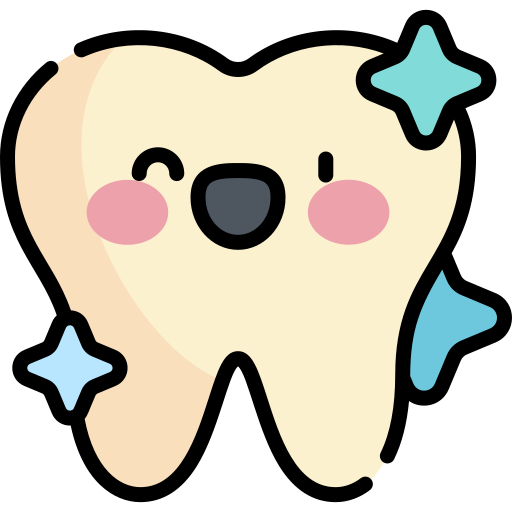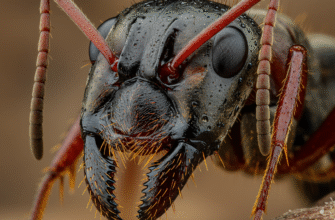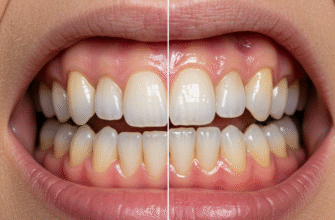When we think about teeth, we often picture them as simple, smooth, white structures. But take a closer look, or even just run your tongue over your own, and you’ll discover a surprisingly diverse landscape of textures and surfaces. Each tooth, and indeed different parts of the same tooth, can present a unique tactile experience and visual appearance, shaped by its development, function, and life experiences. This intricate topography is far from accidental; it’s a testament to the sophisticated design of our oral machinery.
The Outer Shell: Enamel’s Diverse Manifestations
The primary surface we encounter on a healthy tooth is enamel. This is the tooth’s protective outer layer, renowned for its incredible hardness. But even enamel isn’t uniformly flat or featureless. Its presentation can vary quite a bit, contributing to the overall texture profile of our dentition.
Smoothness and Sheen
Ideally, healthy enamel on the facial (cheek-facing) and lingual (tongue-facing) surfaces of many teeth feels remarkably smooth, almost glass-like. This smoothness isn’t just for show; it helps reduce plaque accumulation as there are fewer microscopic nooks for bacteria to hide. A healthy enamel surface will also have a natural sheen or luster, reflecting light in a way that contributes to a bright smile. This characteristic smoothness is most apparent on the broad surfaces of incisors and canines.
Natural Grooves and Fissures
Contrast this smoothness with the chewing surfaces of your back teeth – the premolars and molars. Here, the enamel is sculpted into a complex array of peaks (cusps) and valleys (grooves and fissures). These are not imperfections but are developmental features crucial for efficient chewing. The grooves, technically known as fissures when they are deep and narrow, create channels for food to be crushed and guided during mastication. While functional, these intricate patterns can also be areas where food particles and bacteria accumulate, making them more prone to issues if not cleaned thoroughly.
Mamelons: The Ripples of Youth
If you’ve ever looked closely at newly erupted permanent incisors in a child, you might notice three small, rounded prominences along their biting edges. These are called mamelons. They are remnants of the developmental lobes from which the tooth formed. Typically, these mamelons wear away naturally with normal biting and chewing within a few years of eruption, leaving a flatter, more even incisal edge. Their presence in an adult can sometimes indicate an open bite or other occlusal (bite-related) factors where the front teeth don’t meet properly.
Beyond the Enamel: What Lies Beneath and Around
While enamel is the star of the show, other dental tissues can contribute to the surfaces we might see or feel, particularly if the enamel is worn, damaged, or if we consider the parts of the tooth normally hidden below the gumline.
Dentin: The Softer Core
Beneath the enamel lies dentin, which forms the bulk of the tooth. Dentin is considerably softer than enamel and has a more yellowish hue. If enamel wears down significantly due to attrition (tooth-on-tooth grinding), abrasion (from aggressive brushing or abrasive substances), or erosion (acid attack), dentin can become exposed. Exposed dentin has a different texture – it’s less slick than enamel and can feel slightly rougher. Because it contains microscopic tubules that lead to the tooth’s nerve, exposed dentin is often associated with tooth sensitivity. The surface of exposed dentin might appear duller than intact enamel.
Cementum: The Root’s Anchor
Covering the root of the tooth, below the gum line, is a layer called cementum. It’s a bone-like tissue, softer than both enamel and dentin. Its primary role is to provide attachment for the periodontal ligaments that anchor the tooth in its socket. Normally, cementum isn’t visible or palpable in a healthy mouth. However, with gum recession, the root surface and its cementum layer can become exposed. Exposed cementum feels rougher than enamel and is more susceptible to wear and can attract plaque more readily. Its texture is more porous and less dense.
Enamel, forming the outermost layer of a tooth’s crown, holds the distinction of being the hardest substance in the human body. Its exceptional hardness stems largely from a high mineral content, primarily around 96% hydroxyapatite. Despite this inherent strength, enamel remains vulnerable to demineralization when exposed to acids.
A Tour of Tooth Types and Their Terrain
The general textures described above are further nuanced by the specific type of tooth and its designated role in the mouth. Each tooth shape is a marvel of functional design, and its surface features are integral to that function.
Incisors: The Cutting Edge
Located at the front of the mouth, the incisors (central and lateral) are designed for biting and cutting food. Their biting edges are relatively sharp, like little chisels. The labial (lip-facing) surfaces are generally smooth and slightly convex. The lingual (tongue-facing) surfaces are often slightly concave, sometimes featuring subtle ridges or a shallow depression called the lingual fossa, particularly on upper incisors. As mentioned, newly erupted incisors showcase mamelons.
Canines: The Piercing Points
Positioned at the corners of the dental arches, the canines (or cuspids) are long and pointed, designed for tearing food. They feature a single, prominent cusp. Strong ridges, known as marginal ridges, often run along the sides of the lingual surface, converging towards a central ridge that descends from the cusp tip. This gives the lingual surface a more sculpted and less uniform feel compared to incisors. The labial surface is convex and generally smooth.
Premolars: The Transitional Grinders
Behind the canines are the premolars (or bicuspids), which serve as transitional teeth, assisting in both tearing and grinding. They typically have two cusps (a buccal cusp on the cheek side and a lingual cusp on the tongue side), though some lower premolars may have variations. A distinct central groove usually separates these cusps on the occlusal (chewing) surface. This surface is more complex than incisors or canines but less so than molars, with smaller pits and supplemental grooves sometimes present.
Molars: The Mighty Mills
The molars, situated at the very back of the mouth, are the primary grinders. Their occlusal surfaces are the most complex and textured of all teeth. Key features include:
- Multiple Cusps: Upper molars typically have four or five cusps, while lower molars also often have four or five. These robust cusps provide the primary grinding force.
- Deep Grooves and Fissures: An intricate network of developmental grooves (fissures) crisscrosses the occlusal surface, separating the cusps. These include major grooves like the central groove and buccal/lingual grooves.
- Pits and Fossae: Where grooves intersect, small depressions called pits often form. Larger, basin-like depressions are known as fossae. The central fossa is a prominent feature on most molars.
This rugged terrain is highly efficient for crushing and grinding food into smaller particles suitable for swallowing. The sides of molars (buccal and lingual surfaces) are generally smoother but can have developmental grooves extending from the occlusal surface.
Surfaces Transformed: The Impact of Life and Intervention
Tooth surfaces are not static; they change throughout our lives due to various factors, both natural and artificial.
Wear and Tear: The Marks of Time
Daily use inevitably leads to wear. Attrition is wear from tooth-to-tooth contact, often flattening cusps and incisal edges over many years, making surfaces smoother in some respects but potentially exposing dentin. Abrasion is wear caused by foreign objects, like overly aggressive toothbrushing with abrasive toothpaste, which can create notches or worn areas, especially near the gumline, altering the smooth contour. Erosion is the chemical dissolution of tooth structure by acids (from diet or gastric reflux), which can lead to a dished-out, overly smooth, yet often sensitive surface. These processes can significantly alter the original textures, sometimes making them smoother in one area while creating rougher, sensitive spots elsewhere.
Dental Restorations: Man-Made Surfaces
When teeth are affected by decay or trauma, dental restorations are used, each introducing a new type of surface into the oral environment.
Fillings, for example, create different tactile sensations. Traditional amalgam fillings (silver) are metallic and, while polished smooth initially, can feel slightly different from enamel and may tarnish or corrode slightly over many years, changing their surface texture. Modern composite resin fillings (tooth-colored) are designed to mimic natural tooth structure more closely in appearance and can be polished to a very smooth finish, though their texture can change subtly over time with wear and staining.
Crowns, which cover the entire visible portion of a tooth, present entirely new surfaces. Porcelain crowns aim for a glass-like smoothness similar to natural enamel. Metal crowns (like gold) have a distinct metallic smoothness and high polish. Porcelain-fused-to-metal crowns combine both. Even dental sealants, thin plastic coatings applied to the grooves of molars, alter the texture by filling in the deep fissures and creating a smoother, more cleansable occlusal surface.
The journey across the surfaces of our teeth reveals a remarkable world of planned irregularities, functional landscapes, and acquired characteristics. From the glassy smoothness of a healthy incisor to the rugged terrain of a molar’s chewing surface, and the changes wrought by time and care, our teeth are a testament to intricate biological engineering. Understanding these textures offers a deeper appreciation for the complexity packed into every smile.








